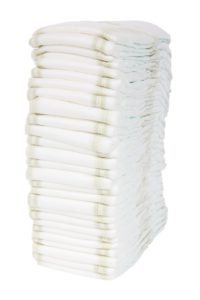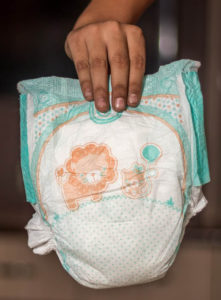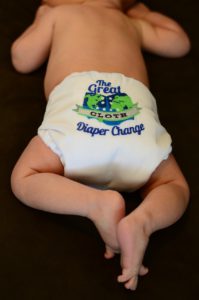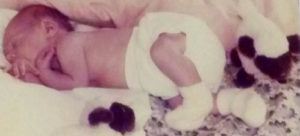2018 Review of Diapering Options
Comparing Diapering Options

Newborn Baby
Are you expecting a baby? Or are you already a new mom? Are you confused about diapering options? I have news for you! The most exciting diaper option is hemp/cotton baby diapers! These diapers consist of 60% hemp and 40% organic cotton. Each measures (26.5″ by 26.5″). Because of this size, you can double fold them??? Due to the combination of hemp and cotton, these diapers have a slight stretch to them, allowing you to get a nice tight fit and eliminate leaks! Hemp helps make these diapers stronger, more absorbent and extremely durable. Hemp also has the ability to help keep your baby cooler in the summer and warmer in the winter. This combination is also softer and gentler on babies skin. Did you know that hemp gets softer with each wash and actually more durable the more you wash it? Also, because hemp is grown without chemicals, and the cotton is organic, this combination is free of pesticides. Think about that! Your beautiful newborn does not have to be exposed to chemicals every minute of every day, unlike putting your precious little one in disposable diapers. These particular diapers by Nicki’s Diapers are called Geffen Baby Organic Hemp Jersey flats. These are high quality products. They are sold individually and sell for about $10 each, I know that sounds like a lot, but by the time I finish this article, you will actually see why this is not expensive. Also, Nicki’s Diapers offers many different options for you and your baby. Not only do they sell many kinds of cloth diapers, they have many other items including blankets, carriers, clothing and nursing items. Click here to Visit Nicki’s Diapers
Cloth Diapers vs Disposable
Are you confused about cloth diapers versus disposable diapers? I am going to break it down for you. First, we will start with disposable diapers. They are expensive. The first year alone can cost you between upwards of $500.00 to $800.00, depending on the brand that you purchase. The first three months of a babies life, a baby requires approximately eight to twelve diapers PER DAY. Basically, they eat and sleep day and night. Based on these calculations, that is 240 diaper changes a month on the low end, and 360 diaper changes a month on the high end. Your range will probably be somewhere in the middle. If so, you would still change diapers approximately 300 per month! WOW! And the cost, at 17 cents per diaper, averages around $51.00 per month on the low end. The cost, on the high end, at 29 cents per diaper, averages around $87.00 per month. The first three months, on the low end, would come to approximately $153.00 and, on the high end, would come to approximately $261.00.
The Cost of Disposable Diapers
After the first three months, diaper changes usually decrease as your tiny one becomes more active and spends more time awake. Diaper changes usually go down to approximately six diaper changes per day. This works out to approximately 180 diaper changes a month. At 17 cents each, on the low end, that equals $30.60 per month. If you spend more, and on the higher end, at 29 cents each, you would spend approximately $52.20 per month. You can assume your baby will require about this same number of diapers through the first year. If we figure the first three months, on the low end, at $153.00 and the next nine months at $275.40 (9 x $30.60), your total for disposable diapers would come to $428.40, just for the first year. If we figure the first three months, on the high end, at $261.00 and the next nine months at $469.80 (9 x $52.20), your total for higher end disposable diapers would be $730.80 for the first year. Most babies do not potty train until around two years old. So you would double that amount to $856.80 for the lower end, and a whopping $1,461.60 on the higher end for two years! And of course, if your little one is closer to 2 1/2 years old, you would add another 50% to the cost. The end result is that you throw all of the money spent on diapers into the trash! You have nothing to show for it and it has a big impact on our community landfills.

A Stack of Disposable Diapers
The Invention of Disposable Diapers
First, I want to discuss the creation of disposable diapers. They were initially developed by Marion Donovan after World War II due to a cotton shortage. Up until that point, all diapers were made of cotton or other materials and resembled a large square of fabric. Most were made from either cotton, flannel or linen. Occasionally some people even used flour sacks to make diapers. They were folded into a triangle and cinched with pins. Marion Donovan created the first “Boater Diaper” which was a cover to put over cloth diapers and made from a shower curtain. Then to make a totally disposable diaper, the outer part was made from the shower curtain with layers of tissue paper for the liner. I cannot even imagine using these? If you have ever worked with tissue paper, you know it practically disintegrates and clumps when it gets wet. But I guess they used what they had. Then in the 1960’s, a type of wood pulp was produced for this use instead of the tissue paper, greatly improving the performance of the disposable diaper. In light of this change, more and more women started using them as an alternative to the cloth diaper, because of the inherent convenience. Mothers soon realized the practical everyday benefits. No more washing and drying diapers. Just throw them in the trash! Another factor seems to be that households had more disposable income after the War.
Patents On Disposable Diapers
Since the introduction of the disposable diaper, there have been over 1,000 patents filed relating to these types of diapers. The disposable diaperconcept continued to increase in popularity, especially in the 1980’s. That is when super-absorbent polymer (SAP), was invented. At the present time, it is estimated that 90% of United States parents use disposable diapers. WHAT A SHAME! And yet these same parents do not seem to relate to the fact that tiny babies, toddlers and young children are developing cancer at an alarming rate and that possibly the infants constant contact with petrochemicals in the fibers might be a possible factor.
Components of Disposable Diapers
Do you know what disposable diapers are made out of? Honestly, I didn’t until I started doing research on diapers when I was pregnant. The various components of disposable diapers are: #1) polyethylene plastic. This plastic is used for the outer lining. This is the same stuff plastic wrap is made out of. This same plastic is also used for the inner lining that touches your precious newborns genitals and other body parts. The raw material to produce polyethylene for the diapers is OIL! Did you know it takes one cup of crude oil to make the plastic for one disposable diaper? Yes that is a fact. Diaper companies will tell you these components are perfectly safe for you to use on your babies skin. REALLY? #2) waterproof wood pulp. You say W-H-A-T? Yes, that is right. (And yes, I know that toilet paper is also made from wood pulp. That is a whole other story!) Wood pulp is used for the absorbent core. Many times the wood pulp that is used is bleached with chlorine so the core appears white. Diapers are made from wood. Also, how do you think they make that wood pulp waterproof? Have you ever looked on the back of a can of waterproof spray? It is possible that some of the same chemicals are used in disposable diapers. One of those chemicals is known as dioxin. Here is another kicker for you! THESE KINDS OF CHEMICALS ARE KNOWN TO CAUSE CANCER IN HUMANS!! And yet, disposable diaper companies often relate to you that these diapers are perfectly safe to use on your newborn! #3) Another substance used for disposable diapers is a super-absorbent polymer. These ploymers are better known as sodium polyacrylates and are used because they soak up to 30 times their weight when dampened with urine. These small transparent crystals are supposed to remain in the inner core of the diaper, but we might suspect that occasionally they might leak and settle on baby’s skin. Can you imagine putting oil, wood and chemicals on a newborn? That may be exactly what you are doing if you use disposable diapers.
Other Components Used In Disposable Diapers

Disposable Diaper with Colored Die
Listed above were the three main ingredients in disposable diapers. But there are other components. Not all diapers have cartoon characters, etc. on the outside. Some are simply white. But for those with coloring on the outside, there maybe several dies that might be used. One coloring is called “Disperse Orange 3”. Another, “Disperse Yellow 3”. Additionally there may be two different blue dies present. These blue dies are known as “Disperse 124 and 106”. These may not be as troublesome as they may not be located right next to the skin. But here is the real kicker. These same dies are often used around the legs and the back waistband where the elastic is located. They may also be employed as a wetness indicator. And guess what? All three of these areas are in direct contact with your baby’s skin.
Perfume In Disposable Diapers
Some disposable diaper manufacturers have been know to use perfume between the absorbent core and the outer layers of the diaper. Many of these perfumes used contain citral, a compound that has a citrus like smell and is the primary substance found in lemon and orange oils. This could cause an allergic reaction, but this is very rare. In recent years, some manufacturers have developed disposable diapers that are chlorine free, perfume free and dye free. You will really need to do your homework if you opt for these. But personally I have to ask —- WHY would you expose your precious, beautiful newborn to any or all of these components?
The Impact Of Disposable Diapers On Our Planet
Now let’s talk about the impact on our planet. Disposable diapers generate 60 times more solid waste and use 20 times more raw materials. Those raw materials are crude oil and wood pulp; not to mention all of the chemicals and chlorine used to sterilize and bleach the diapers. It takes 300 lbs. of wood, 50 lbs. of petroleum feedstock and 20 lbs. of chlorine for every single year that ONE BABY is in disposable diapers. Just think about that! WOW! AND THAT IS PER CHILD PER YEAR!!! There are just slightly under four million babies born in the USA every year. So let’s do the math. To achieve this manufacturers must use 1,200,000,000 (1.2 billion) lbs. of wood or 600, 000 tons, 200,000,000 lbs. of petroleum or 100,000 tons, and 80,000,000 lbs. of bleach! Ever wonder what you and your family could do to reduce your carbon footprint? Well, this gives you a good idea.
Decomposition of Disposable Diapers is Not Environmentally Friendly
Unfortunately disposable diapers seem to be having a negative impact on our planet. It has been estimated that disposable diapers will nominally take between 250 to 500 years to fully decompose in our landfills. That is longer than the lives of your children, your grandchildren, your great-grandchildren and possibly your great-great-great grandchildren! SHOCKING!! Also, think of all of the feces in our landfills. People are supposed to empty feces in the toilet bowl before disposing of diapers, but often they do not. Casually people just roll them up and toss them in the trash. This type of behavior leads to the contamination of our landfills and is impacting landfill workers and wildlife. We, as human beings, have contaminated our planet in many ways. Yet contamination of this kind can be easily avoided . The simple solution is to quit buying and using so many disposable diapers!
Convenience of Disposable Diapers
I understand the convenience of disposable diapers. I know, as mothers, we have many hats to wear and many responsibilities. Anything that makes our lives easier is always welcomed. However, we always manage to make room for the things that are important to us. For example, if we want to eat healthier, we reduce our consumption of fast food, cook healthier meals at home, and consume more fruits and vegetables. When one first starts doing this, it seems like such a hassle. But a few months down the road, it really is not that difficult because we see the benefits of it. We have also managed to work it into our schedule.
Infertility May be Linked to Disposable Diapers
Another important topic concerning disposable diapers relates to newborn baby boys. Because of the non-breathable plastic used on the inside of the diaper, in the genital area, and also used on the outside, tests have shown that the number of sterile men has drastically increased. It turns out that disposable diapers may cause the testicles to get over-heated, and they have no way to cool down. Testicles are naturally positioned on the outside of the body so that they can maintain a temperature of (2.5 to 3 degrees F) lower than a baby’s body temperature in order to protect sperm production. Baby boys are born with sperm-like cells, but technically, they are not sperm yet. When born, a male child has a predetermined number of undeveloped sperm cells. When the testicles are inside a disposable diaper, it makes it impossible for the testicles to cool down. This has an adverse effect on the testicles because the heat build-up is the main cause of reduced fertility in men. Many believe that adult male infertility issues may possibly stem from the use of disposable diapers which has been shown to relate to overheated testicles in baby boys. There was a study done in 2011 that concluded that sperm concentration in men has fallen by 52% among men in the West, in the years between 1973 and 2011. If you want to read the study, here is the link. Two years is a long time to have overheated testicles! What do you think about this issue?
My Personal Preference

Diapers – Which One is Right for You?
I speak from personal experience. When I was pregnant, I spent months doing research, trying to decide what kind of diapers I was going to use for our baby. At the time, I did not know the sex of our baby. The theories of overheated testicles were flying around, even then. That was in early 1980’s when I was pregnant. I ultimately decided to go with cloth diapers. Then when our son was born, I was pretty adamant about cloth diapers. Back then, diaper services were very popular and I opted for that solution. I used cloth diapers the entire time that he was in diapers. Diaper services made it very convenient. All you had to do was shake out the diaper, throw it in the diaper pail, and put the used diapers on the front porch once a week. The diaper service would pick them up and leave a fresh, clean bag of diapers every single week. I lived in the bay area of California and used a service called Tiny Tots Diaper Service. Believe it or not, that diaper service is still delivering cloth diapers to homes!
I never put my son in a disposable diaper! Not once! When we went out shopping, etc. I always carried extra cloth diapers and disposable bags to put them in. Also, when we traveled, I always shipped diapers ahead of us so they would be there when we got there. Everyone thought I was nuts, but that is how committed I was to providing the best for our son. When he was a year old, we had a family reunion on Orcas Island off the coast of Washington. I shipped a whole suitcase of diapers with us! We rented a condo and it had a washer and dryer. (We made sure of this before our trip.) Our precious baby boy always had fresh, clean cloth diapers. I also loved the smell of the fresh diapers!
Cloth Diapers Service
Now that I have discussed disposable diapers, I will now turn my attention to cloth diapers. As I referred to above, I used a diaper service for our son. So we will cover that first. Most large metropolitan areas have diaper services. If you live in a rural area or a small town, this may be out of the question for you. This turned out to be the problem I ran into when my niece had babies. I wanted to pay for a diaper service, but they did not have one in her town. Tiny Tots is going to serve as my example as that is the company I am most familiar with. Costs may vary depending on where you live. Also, diaper services usually offer different sizes just like disposable diapers do. Tiny Tots requires a four week minimum and diapers are ordered in a quantity of five. So let’s say your newborn requires 75 diapers a week. You would order 15 increments of 5. The cost per week would be $26.25. That is a total of $105.00 per month. That is about double what you would pay for disposable diapers on the low end and about $18.00 more per month on the high end of disposable diapers. After the first three months, that cost would go down to around $21.75 for about 45 diapers per week. Your grand total for the month would be approximately $87.00. So for one year of a diaper service, it would cost you approximately $1,098.00 per year. Two years would be approximately $2,196.00. This is even more expensive than disposable diapers. But here is the thing. This is super EASY! If you have the money and work limits your free time, this may be the best option for you. The only other things you need are a diaper pail, some diaper pins and wipes (if you use them?) I did not use wipes either! I used wet, warm washcloths for our son. Oh, and you will need a few diaper covers. Again, with a diaper service, you have nothing to show for all the money you spend. Well, except you will have a very happy baby! And, you might greatly reduce their risk of cancer. I would say that is a pretty good investment!
Purchasing and Using Cloth Diapers
Having explored disposable diapers and a diaper service, I will turn to the subject of buying your own cloth diapers. Now as I mentioned in the first paragraph, the initial cost of cloth diapers may sound expensive. Most people purchase enough cloth diapers to get them through at least 3 1/2 days before having to do a load. So lets say your newborn needs 75 diapers a week. You could purchase 38 cloth diapers at $10.52 each. That comes to a total of $399.76. You will also need a few liners and some diaper covers. So lets say you need 38 liners also. Those come individually for $3.95 each. If you purchase 38 of those, your total would be $150.10. You would need to do two loads a week to keep your little pumpkin in clean cloth diapers. Also, your upfront cost would be $549.86. Also, you will need diaper covers. A pull on diaper cover will cost you $6.95 each. Again, 38 of these would cost you an additional $264.10. That would bring your grand total to $813.96. Here is the good news! You do not have to purchase them AGAIN for the second year! Now this is if you are paying full price. This company always has some kind of a special running. So if you spend time looking for the best deals, you could save yourself about 20% to 30% on the overall cost.
Organic Hemp Baby Diapers with Cloth Added Offer “Green Alternatives”
My recommendation for Hemp Baby Diapers is to purchase the Geffen Baby Organic Hemp Jersey Flats from Nicki’s Diapers , costing about $10.52 each. The qualities are listed in the first paragraph. Another offering by Nicki’s Diapers is the Thirsty Duo Hemp Pre-Folds priced at $7.75 each. These are more durable than cotton and more absorbent. In additon, Hemp diapers have anti-microbial properties and the more you wash them the softer they become. These hemp baby diapers do not loose their ability to absorb moisture. These hemp baby diapers come in several different sizes. Size 1 is for (6 -18 lbs). and Size 2 is for (18 – 40 lbs). You do not necessarily need to buy two different sizes. When our son was born, there was only “one size fits all”. Because newborns are only tiny for a couple of months and grow so fast, it is wiser to buy the larger size. You will figure out how to fold it so it will kind of fit! Your baby may like he or she is being swallowed by the diaper the first couple of months, but you will save in the long run.

Our precious son in cloth diapers!
Here is the thing with buying your own cloth diapers, inserts and diaper covers. This is, by far, the most economical way to go if you are planning on having more than one child. Once you purchase these items, you will have them to use on multiple babies! If you spend $813.96 upfront, your cost for 2 years is actually $406.98 per year. And if you use them for baby number two, your cost per year would go down to $203.49 for 2 years for 2 babies!! See what I mean about being inexpensive and the best option! Click here to visit Nicki’s Diapers
Extra Costs Related to Purchasing Cloth Diapers
I guess to be accurate, I should also include the extra cost for the extra loads you put into the washer and dryer. Let’s estimate that each load will cost you $2.00 in electricity and water. This would total up to approximately $208.00 for the year. Of course, that would be paid out monthly on your bills. If you purchase soap at $15.00 for 60 loads, that comes out to .25 cents a load. If you do two loads per week, that computes to (0.50 cents a week x 52 weeks). Over the course of a year, the total cost comes to $26.00. So if we add $208.00 plus $26.00 the yearly cost will be $234.00. Even adding in these costs, of buying and washing your own diapers, it still might be the best option in my opinion.
Strategies For Up-Front Cost
Now I know that some will have a hard time coming up with this amount of money upfront. I have a couple of suggestions. Once you have passed the three month pregnancy mark and your pregnancy looks like it will progress, if possible start planning for the diapers, liners and covers. You could order $125 per month and build up your stock. By the time the baby comes, you would have what you need and would have no expenses once your precious bundle arrives. Here is another suggestion. If someone is throwing you a baby shower, have them tell everyone that is invited to think about buying a couple of these items for you. Tell your Mom, your aunts, your friends, etc. That would make a nice dent in the amount that you will need. And, all of the guests could also look for specials, coupons, etc. that are offered on the site and save money also. It is a WIN – WIN – WIN for your guests, you and your baby!
~~~~~~~~~~~~~~~~~~~~~~~~~~~~~~~~~~~~~~~~~~~~~~~~~~~~~~~~~~~~~~~~~~~~~~
I hope that I have been able to clarify some of the questions you may have about diapering your precious angel! If you still have questions or need help in any way, please feel free to contact me. I would love to be able to help you!